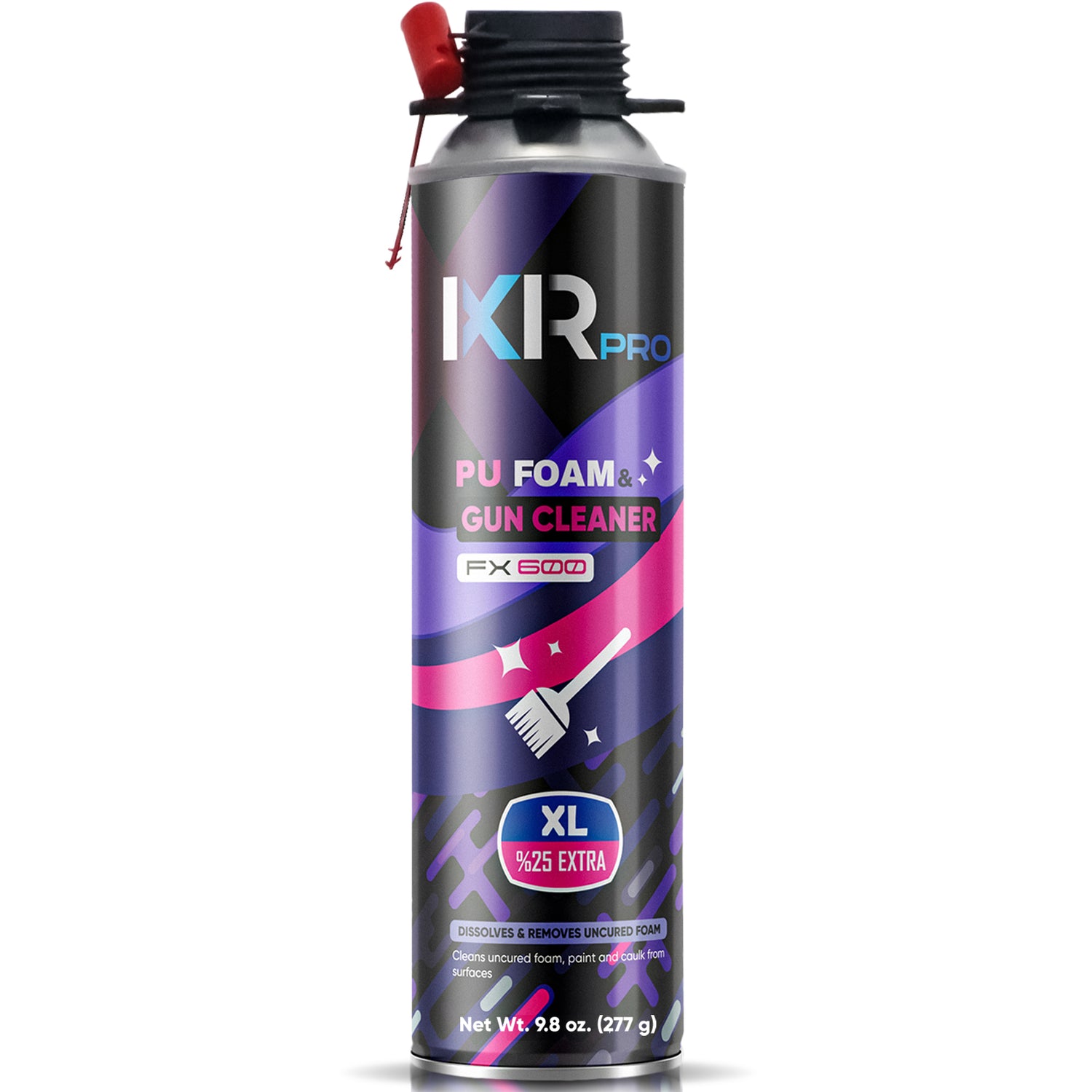Discover how to block unwanted pests while boosting your home's energy efficiency.
If we had a dollar for every time someone asked, “Does spray foam keep mice out?”, we’d be millionaires by now! Nobody likes the sound of scratching in the walls or scurrying overhead in the attic. Mice often sneak in through the tiniest gaps, and once they’re inside, they can cause serious damage. But can using a spray foam kit really help solve the problem?
In this guide, we’ll dive deep into whether spray foam can prevent mice and rodents from entering your home. We’ll also cover the most effective types of spray foam for pest control, additional steps to keep your home mouse-free, and whether a DIY spray foam kit is right for the job.
What Are the Signs of a Mouse Infestation?
Mice are stealthy—until they’re not. Here are a few signs that you might be sharing your space with unwanted furry guests:
-
Small droppings or a musky odor around cabinets, attic, or basement
-
Chewed food packaging or wiring
-
Torn fabrics or shredded paper for nesting
-
Scratching noises at night
Even if you spot just one mouse, take it seriously—they reproduce quickly, and an infestation can escalate within weeks.
How Does Spray Foam Help Keep Mice Out?
Spray foam works by expanding into cracks, gaps, and crevices—sealing your home tightly. When applied, spray foam expands to fill even the smallest openings where mice often enter. This makes it an ideal solution for:
-
Crawl space
-
Attic
-
Garage wall gaps
-
Door and window frame sealing
Unlike traditional fiberglass, spray foam is not a nesting material or food source for rodents. While no method is 100% mouse-proof, high-quality closed cell spray foam kits and polyurethane spray foam kits make it incredibly difficult for mice to chew or claw their way through.
Can Mice Chew Through Spray Foam?
The honest answer: yes, they can—but they rarely do. Mice have strong teeth and can gnaw through many materials if they really want to. However, spray foam—especially closed cell spray foam kits—creates a dense barrier that rodents generally avoid. Plus, it contains compounds that make it unappetizing to chew.
If you're using a professional-grade spray foam gun kit, you can apply foam deep into problem areas to create a tough, unappealing surface for pests.
What Type of Material Keeps Mice Away?
When it comes to rodent resistance, here’s how different types stack up:
-
Fiberglass: Easily shredded by mice for nesting.
-
Cellulose: Made from paper, attractive to pests.
-
Rigid Foam Board: Can be chewed through if not sealed properly.
-
Spray Foam: Expands to fill gaps, not a food source, and hard to chew.
For best results, choose a DIY polyurethane spray foam kit or closed spray foam kit for full coverage in entry-prone areas like attics, crawl spaces, or wall cavities.
Benefits of Using Spray Foam for Pest Prevention
🛑 Pest Deterrence: Creates a solid, impenetrable barrier
💡 Energy Efficiency: Prevents drafts and reduces heating/cooling costs
🛠️ Durability: Long-lasting performance for structural and thermal integrity
💸 Cost Savings: Avoid future pest-related damage and exterminator fees
If you're sealing cracks, a self spray foam kit with a precision spray foam gun is an ideal choice.
Should You DIY or Hire a Pro?
For small jobs like sealing wall gaps, basement corners, or door frames, a spray foam DIY kit is perfect. You can even find spray foam kits for attics, crawl space spray foam kits, and spray foam garage door kits with everything included—gun, cleaner, nozzles, gloves, etc.
However, for large-scale projects or hard-to-reach spaces, hiring a professional may ensure better coverage and long-term results.
Extra Tips to Keep Mice Out
Even with spray foam, you need a full strategy to stay rodent-free:
-
Seal All Gaps: Use spray foam with a foam gun to fill larger gaps, and caulk smaller cracks.
-
Clean Regularly: Don’t leave food out, and clean up crumbs.
-
Store Food Properly: Use airtight containers.
-
Trim Vegetation: Don’t give mice places to hide near your home.
-
Fix Drainage: Mice can squeeze through broken drains and pipes.
-
Hire Exterminators if Needed: If you already have mice, call a pest control expert before sealing with spray foam.
Final Thoughts
Spray foam won't kill mice, but it’s one of the most effective ways to keep them out. By sealing up cracks and gaps with spray foam sealant kits, you make your home a fortress—no entry, no nesting, no chewing.
Looking to protect your home today? Browse our range of DIY spray foam kits, closed cell spray foam kits, and spray foam guns to get started. Whether you're sealing your attic, a garage, or blocking gaps in the basement—we’ve got you covered.
FAQs
Will spray foam keep mice out of my house?
Yes. While it doesn’t kill mice, spray foam fills cracks and gaps where mice usually enter—effectively keeping them out.
What spray foam is best for rodent prevention?
Closed cell spray foam kits offer the best density and resistance.
Can mice chew through closed cell spray foam?
Technically yes, but it's uncommon. The dense structure and chemical composition make it an unappealing option for rodents.
Where can I buy spray foam kits?
Right here on our site! We offer a variety of spray foam kits for sale—including options for walls, attics, basements, and more.


























